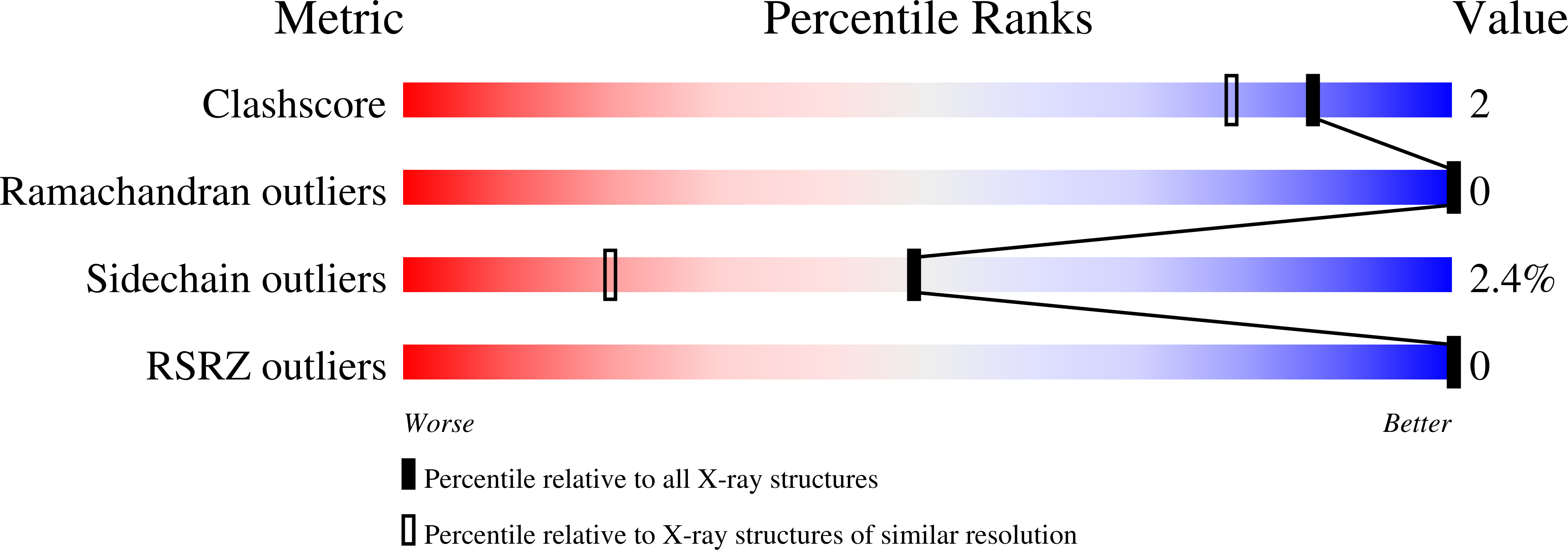A nucleophile activation dyad in ribonucleases. A combined X-ray crystallographic/ab initio quantum chemical study
Mignon, P., Steyaert, J., Loris, R., Geerlings, P., Loverix, S.(2002) J Biol Chem 277: 36770-36774
- PubMed: 12122018
- DOI: https://doi.org/10.1074/jbc.M206461200
- Primary Citation of Related Structures:
1LOV, 1LOW, 1LOY - PubMed Abstract:
Ribonucleases (RNases) catalyze the cleavage of the phosphodiester bond in RNA up to 10(15)-fold, as compared with the uncatalyzed reaction. High resolution crystal structures of these enzymes in complex with 3'-mononucleotide substrates demonstrate the accommodation of the nucleophilic 2'-OH group in a binding pocket comprising the catalytic base (glutamate or histidine) and a charged hydrogen bond donor (lysine or histidine). Ab initio quantum chemical calculations performed on such Michaelis complexes of the mammalian RNase A (EC ) and the microbial RNase T(1) (EC ) show negative charge build up on the 2'-oxygen upon substrate binding. The increased nucleophilicity results from stronger hydrogen bonding to the catalytic base, which is mediated by a hydrogen bond from the charged donor. This hitherto unrecognized catalytic dyad in ribonucleases constitutes a general mechanism for nucleophile activation in both enzymic and RNA-catalyzed phosphoryl transfer reactions.
Organizational Affiliation:
Eenheid Algemene Chemie (ALGC), Faculteit Wetenschappen, Vrije Universiteit Brussel, Pleinlaan 2, 1050 Brussels, Belgium.
















